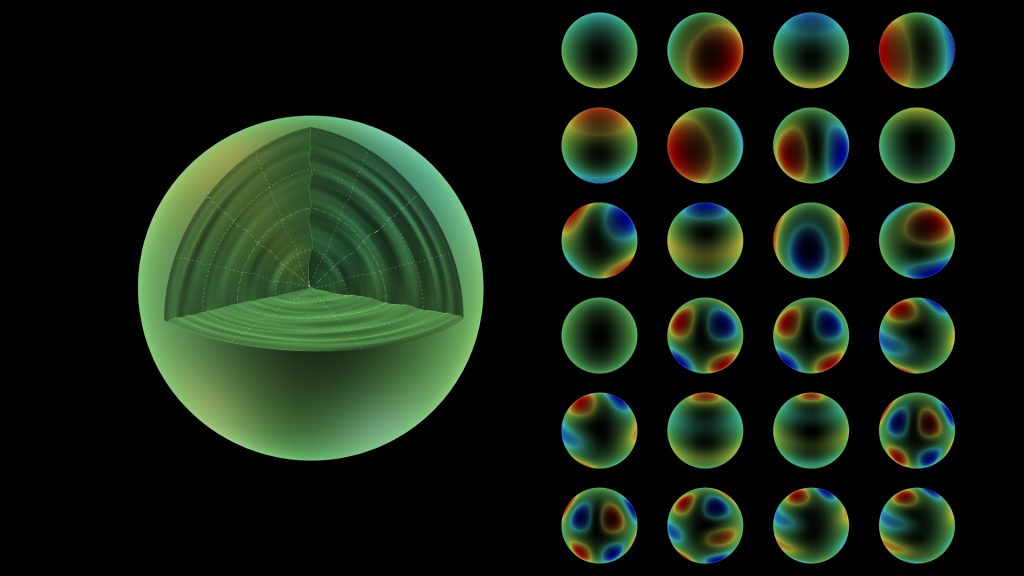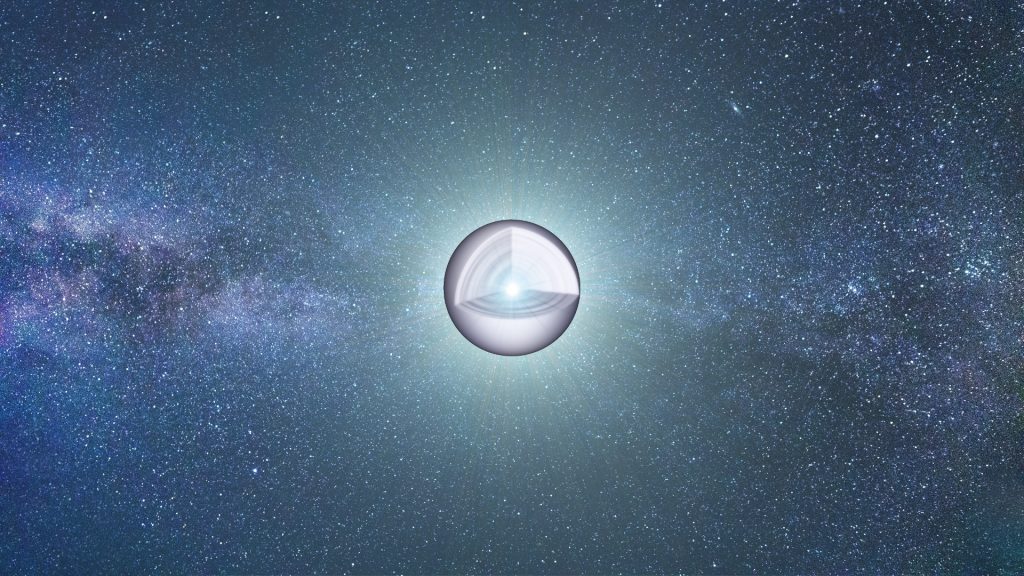Journey to the Center of a White-Dwarf Star
A stellar core that challenges predictions: here is the result of the first cartography of the interior of a white-dwarf star performed by an international team lead by a young researcher from the Institut de Recherche en Astrophysique et Planétologie of Toulouse and three researchers from the Center for Research in Astrophysics of Quebec at Université de Montréal. This discovery will provide insights on the different physical mechanisms involved in the evolution of stars and our Sun. This result is published in Nature, Jan 8th, 2018.
By exploiting data from NASA’s Kepler spacecraft on the pulsating star KIC 08626021, an international team of astrophysicists led by Noemi Giammichele, a young researcher from the Institut de Recherche en Astrophysique et Planétologie (IRAP) of Toulouse in collaboration with Professor Gilles Fontaine, Professor Pierre Bergeron and researcher Pierre Brassard from the Center for Research in Astrophysics of Quebec (CRAQ) at Université de Montréal, unraveled the cartography of the internal composition of a white dwarf, the distant successor of a star just like our Sun. The luminosity oscillations observed at the surface of this star were deciphered with “asteroseismic” techniques, which are akin to methods used by geophysicists to study the structure of our planet with the seismic waves caused by Earthquakes.

White-dwarf stars are the interior relics of approximatively 97% of the stars in the Universe. These stellar fossils retain prints of past physical processes like nuclear burning and episodes of convective mixing – phenomenon which are quite uncertain in the actual modeling of stellar evolution theories. To have a glimpse at the internal composition of these stars will allow scientists to better elucidate the phenomenon at play during early phases of stellar evolution.
During the phase in which they cool down, these white dwarfs will undergo phases of instability where they start to pulsate. These deep vibrations are the keys to unveiling the interior of their stellar remnants. The internal chemical stratification of the white-dwarf star creates a unique signature on the modulation of the light coming out of the star, which, once deciphered, allows one to obtain a cartography of the structure.

What can we learn from unfolding all the layers of these stars? Not only that the stellar core of these stars is bigger and richer in oxygen than predicted, but we are also able to get the distribution profiles of all the main chemical elements present. This exciting discovery provides a precise benchmark to better calibrate the physical processes of nuclear burning and convective mixing taking place in most of the stars – particularly during the pre-white dwarf phases. A precise knowledge of the internal chemical composition of white dwarfs is also useful as “cosmological chronometers” for dating stellar populations of our galaxy.
Paper to appear in Nature:
« A large oxygen-dominated core from the seismic cartography of a pulsating white dwarf » N. Giammichele, S. Charpinet, G. Fontaine, P. Brassard, E.M. Green, V. Van Grootel, P. Bergeron, W. Zong, & M.-A. Dupret. DOI: 10.1038/NATURE25136
Contacts:
Dr. Noemi Giammichele
Institut de Recherche en Astrophysique et Planétologie de Toulouse
Phone : 001(438) 887-4432 (actuellement à Montréal, Canada, 6h de décalage horaire)
noemi.giammichele@irap.omp.eu
Noemi Giammichele is a FRQNT (Quebec) postdoctoral researcher at IRAP in Toulouse. She completed her PhD dissertation in 2016, under the joint supervision of Professor Gilles Fontaine and Dr. Pierre Brassard, both members of the Center for Research in Astrophysics of Quebec at Université de Montréal.
Professor Gilles Fontaine
Centre de recherche en astrophysique du Québec
Université de Montréal
Phone : (514) 343-6680
fontaine@astro.umontreal.ca
Robert Lamontagne
Public outreach
Centre de recherche en astrophysique du Québec
Université de Montréal
Cell : (438) 495-3482
lamont@astro.umontreal.ca
